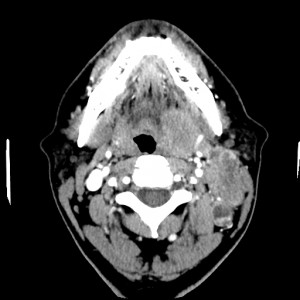
What Goes Into Cancer Staging?
-
The staging process should begin during an office visit. The history of the patient’s illness and the physical examination often provide important clues about the tumor and whether it has spread. Some cancers can be seen, some can be felt, and examination may reveal body changes that are signs of tumor spread.
Even if a cancer can be seen or felt, a variety of tests may be performed when doctors are trying to find out whether a patient has a cancer, or whether one has spread. Radiology or Medical Imaging tests include: X-rays, CAT scans, MRI scans and ultrasound examinations. Sometimes these tests are done before a patient is even proven to have cancer—just on suspicion. Patients who are feared to have cancers of the throat, voice box, lung, esophagus, stomach, colon, and rectum may even go through “endoscopy” procedures, which allow doctors to look inside of the body’s “hollow” organs. Endoscopes are lighted tubes, often with a video camera, that may allow a doctor to see a tumor or other abnormality.
A PET Scan showing tonsil cancer with neck node metastases.
Once a tumor’s location is known, small pieces of tumor (“specimens”) can usually be taken for study with very small bites or by sucking cells out through a needle. Proof that a patient actually has cancer comes from seeing the cancer’s cells under the microscope—they usually don’t look like normal cells.

Removal and examination of a “specimen” is called a “biopsy.” Showing that a patient really has cancer should be an early step in treatment planning, but it isn’t always exactly clear where the cancer is located in the body, so the tests mentioned above might be needed before the biopsy can be performed.
Most cancers are assigned to a particular “stage” based upon their size and whether they have spread to nearby lymph nodes or elsewhere in the body. Medical imaging test and endoscopy are often useful for staging. They may be performed before or after a biopsy proves that the patient has cancer. PET scans may also help to show cancer spread, but they are not always helpful and are seldom done before a patient has been proven to have an active cancer.
For staging, the size of the primary tumor (where the cancer first started to grow), whether the cancer has spread to lymph nodes, and whether the cancer has spread elsewhere in the body are taken into account. Sometimes the way cells look under the microscope tells doctors important things about how the cancer will behave, so sometimes the cancer cell’s appearance is included in the staging as well. Occasionally different types of cancer may arise in the same organ, and they may be assigned different stages because they don’t behave the same way.

Usually, cancers that have already spread at the time they are found are harder to control than cancers that have not spread. Cancers that are harder to control will be assigned a higher stage. Most cancer stages are written with roman numerals, and run from I to IV, where IV is the most advanced.
Learn more about the Imaging Center at Fox Chase Cancer Center.
